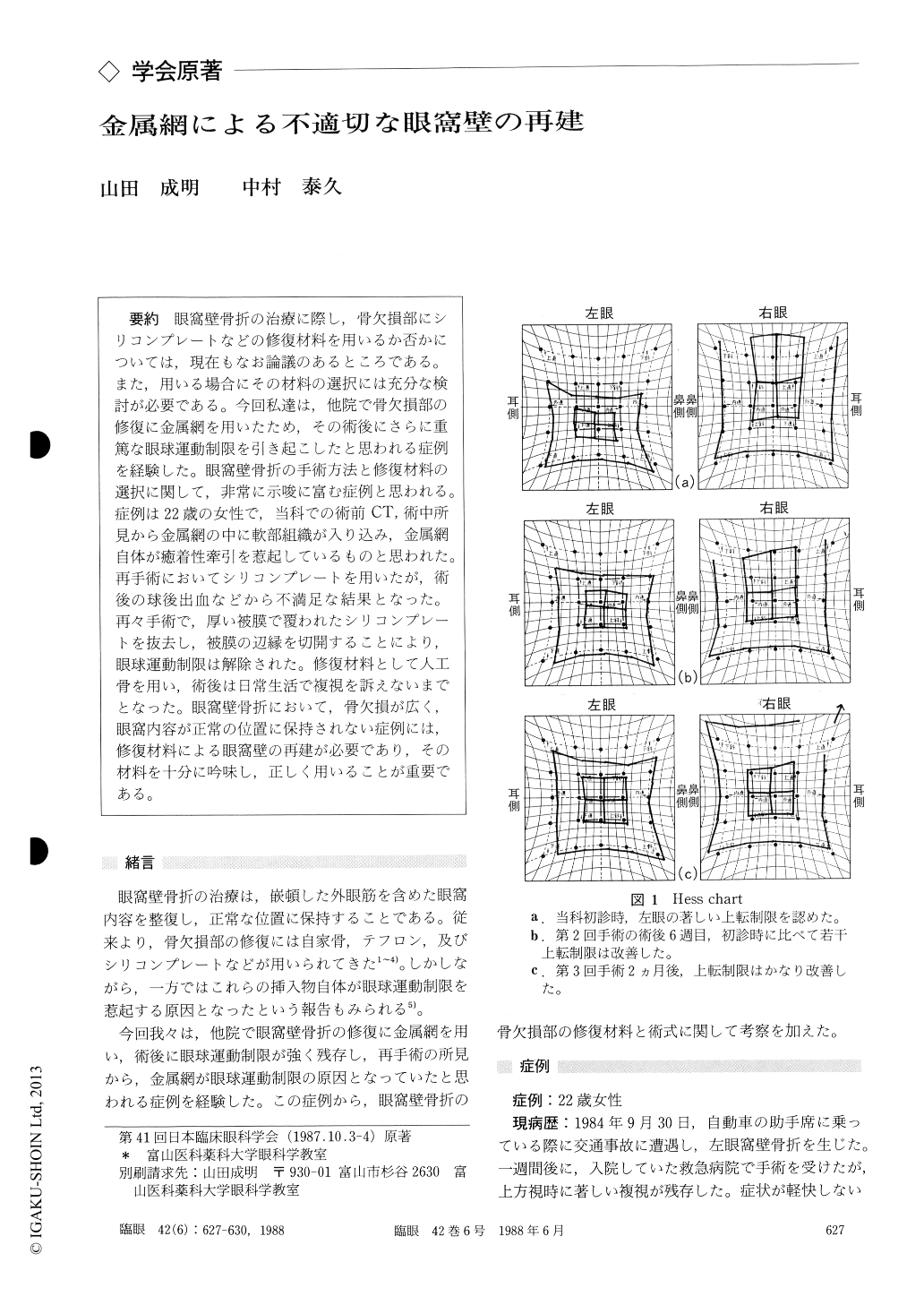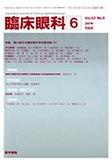Japanese
English
- 有料閲覧
- Abstract 文献概要
- 1ページ目 Look Inside
眼窩壁骨折の治療に際し,骨欠損部にシリコンプレートなどの修復材料を用いるか否かについては,現在もなお論議のあるところである.また,用いる場合にその材料の選択には充分な検討が必要である.今回私達は,他院で骨欠損部の修復に金属網を用いたため,その術後にさらに重篤な眼球運動制限を引き起こしたと思われる症例を経験した.眼窩壁骨折の手術方法と修復材料の選択に関して,非常に示唆に富む症例と思われる.症例は22歳の女性で,当科での術前CT,術中所見から金属網の中に軟部組織が入り込み,金属網自体が癒着性牽引を惹起しているものと思われた.再手術においてシリコンプレートを用いたが,術後の球後出血などから不満足な結果となった.再々手術で,厚い被膜で覆われたシリコンプレートを抜去し,被膜の辺縁を切開することにより,眼球運動制限は解除された.修復材料として人工骨を用い,術後は日常生活で複視を訴えないまでとなった.眼窩壁骨折において,骨欠損が広く,眼窩内容が正常の位置に保持されない症例には,修復材料による眼窩壁の再建が必要であり,その材料を十分に吟味し,正しく用いることが重要である.
A 20-year-old female was involved in traffic accident and suffered from blunt injury to her left eye resulting in blowout fracture of the orbital floor. She underwent surgery with implantation of titanium mesh to reconstruct the orbital floor 1 week after the injury. Because of persistent severe diplopia uppon upper gaze, she was referred to us 18 months later.
Computed tomography showed adhesion of the inferior rectus to the metallic mesh. During second surgery, fibrous tissues invaded into the mesh resulting in adherence of soft tissue to the orbit. Weremoved the mesh and implanted a silicone plate to reconstruct the orbital floor. A third surgery became necessary 6 months later because of persist-ent diplopia. We removed the silicone plate which was encapsulated by thick fibrous tissue and released the adhesion to the surrounding soft tissue. We implanted an acrylic plate anew and the di-plopia disappeared.
We hold the view that titanium mesh is contrain-dicated in the reconstruction of orbital floor because of its tendency to incur fibrotic reaction in the adjacent tissue and eventually to impair ocular motility.
Rinsho Ganka (Jpn J Clin Ophthalmol) 42(6) : 627-630, 1988

Copyright © 1988, Igaku-Shoin Ltd. All rights reserved.


